| |
| |
Photographer,
Location |
Images |
Comments |
|
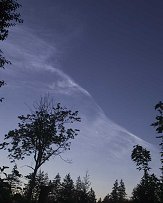
|
Jeff
Culp,
Maple Valley, Washington, USA
Jul. 15, 2009 |
#1 |
Lovely
Noctilucent clouds. Disappeared within 15 mins of photo
being taken. Moon visible in upper RH corner. 0447
PDT of 7-15-09. Used Canon 1Ds w/ 24-70L lens, f/8, 5 sec
exposure ISO 400.
|
|
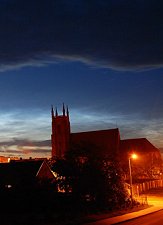
|
Marcin
Południewski,
Dobiegniew, Poland
Jul. 14, 2009 |
#1,
#2,
#3,
#4 |
Sultry,
summer night with NLC. Nikon D80, Nikkor 18-70, F/4,5, ISO
400. |
|
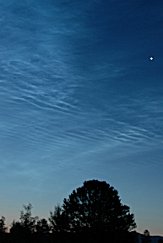
|
Steve
Poole,
Wilson, Wyoming in the Jackson Hole Valley.
Jul. 15, 2009 |
#1 |
Noctilucent
clouds over Wyoming on 7-15-2009 at 4:50 am. Very Bright
and quite extensive with the planet Venus shining bright
for a scale. The clouds disappeared about a half hour before
local sunrise which is just after 6am. ISO 200 @ f3.5 for
.8 sec with a Nikon D70 |
|
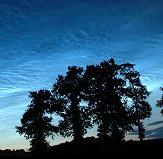
|
Lecoq
Etienne,
Mesnil Panneville ,Normandy , France
Jul. 14, 2009 |
#1,
#2, #3 |
For
the French national Day, 14 Juillet, very bright noctiluvent
clouds over Normandy 2 sec exposure with Nikon D70 and 24/120
zoom lense |
|
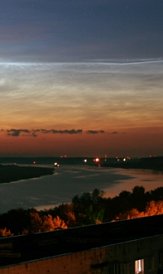
|
Alex
Tudorica,
Dubna, Russia
Jul. 12, 2009 |
#1 |
A
trip to a northern location like Dubna does have other advantages
besides the science facilities here - impressive noctilucent
displays. Here, at 56 N there is no night and the NLC display
lasts all night long. The photograph was made near midnight.
|
|
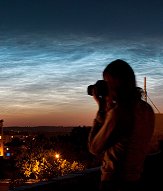
|
Mindaugas,
Vilnius, Lithuania, Europe.
Jul. 14, 2009 |
#1,
more |
Very
bright noctilucent clouds over Vilnius, photographed with
Canon 450D, from the rooftops looking north. You can see
Vilnius TV tower. This is a panoramic view of 5 photos,
each exposure of 8 seconds, f5,6, 24mm, iso 100. |
|
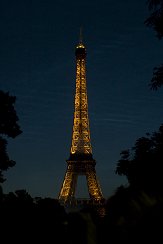
|
Thomas
Robitaille,
Paris, France
Jul. 14, 2009 |
#1,
#2 |
This
was the most impressive display of noctilucent clouds I
have seen to date. These were visible during the Bastille
Day fireworks in Paris. Taken with a handheld Canon EOS
300D. |
|
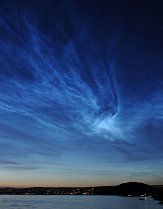
|
Morten Ross,
S andbukta, Svartskog, Norway
Jul. 15, 2009 |
#1,
#2, #3,
more |
At last a clear night and NLCs! The NLCs were very fast moving this time. I have noticed that the direction of the NLCs I have observed have been the same - namely from the north east. I will continue to note the direction.
Nikon D700, 70mm @ 00:39, 01:23 and 02:06 local time.
|
more
images: from
Ralf Vandebergh of the Netherlands; from
Alexey Sokolov of Riga, Latvia; from
Marek Nikodem of Szubin, Poland; from
Jos Peters of Venlo, Limburg, Netherlands; from Brian Amme
just north of Reno, NV; from
Pavel Klimes of Hostivice, Czech Republic; from
Alan C Tough of Elgin, Moray, Scotland; from
Nejc Ucman of Verdun, Novo Mesto, Slovenia; from
Lori Checkowy of King City, Ontario; from
Jaromir Nemec of Davle, Czech republic;
|
|









